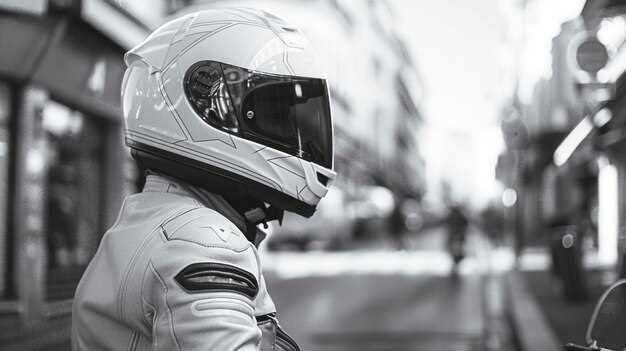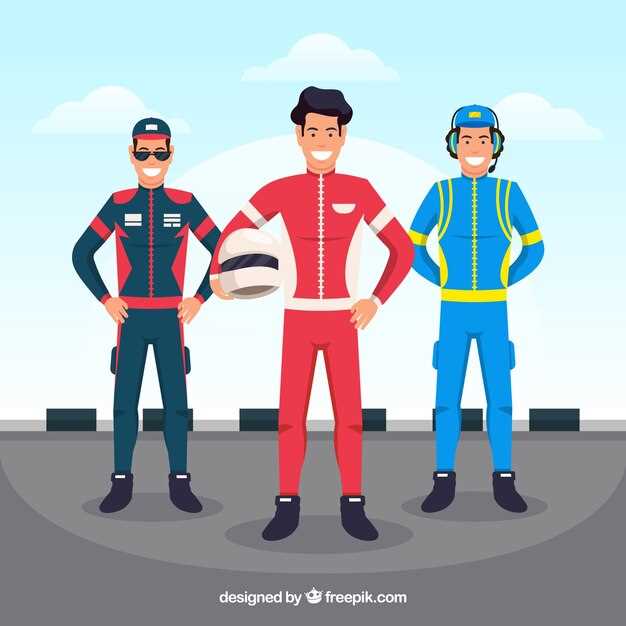
Participating in track days is an exhilarating experience for motorsport enthusiasts, but it also demands a significant commitment to safety. Selecting the right racing suit, helmet, and safety gear is crucial to ensuring a secure and enjoyable time on the track. This guide will help you navigate the essential elements to consider when equipping yourself for high-speed scenarios.
The racing suit is your first line of defense against fire and abrasion. It’s vital to choose a suit made from fire-resistant materials that not only comply with international safety standards but also provide a comfortable fit. Considerations such as layer count, seam construction, and overall weight play a significant role in performance and comfort, impacting your ability to concentrate on the race rather than on discomfort.
Your helmet is perhaps the most critical piece of safety gear. A well-fitted, high-quality helmet is indispensable for protecting your head in the event of an accident. When selecting a helmet, look for one that meets recognized safety certifications and features advanced technology like multi-directional impact protection. A visor that provides excellent visibility without distortion is also essential to help you maintain situational awareness on the track.
Beyond suits and helmets, additional safety gear such as gloves, shoes, and neck braces further enhances your protection. Each component must be selected judiciously, considering both safety ratings and comfort. Investing in high-quality equipment not only safeguards your well-being but also allows you to focus entirely on the thrilling experience that track days offer.
Understanding the Importance of Racing Suit Materials and Features
The racing suit is a critical component of a driver’s safety gear, designed to protect against fire hazards and provide comfort during high-performance driving. The choice of materials used in racing suits directly affects their effectiveness and the level of protection they offer.
First and foremost, the most common materials used in racing suits are Nomex, Kevlar, and other synthetic fibers. Nomex, a heat-resistant material developed by DuPont, is highly favored for its flame-retardant properties. It provides the necessary insulation against extreme heat and flames, which is vital in the event of an accident. Additionally, the breathability of Nomex aids in temperature regulation, allowing drivers to maintain focus without being distracted by discomfort.
Kevlar, another fire-resistant material, is often incorporated into racing suits for its high strength-to-weight ratio. This flexibility and durability provide excellent protection without adding unnecessary bulk, ensuring that drivers remain agile on the track. Some suits blend these materials with other textiles to enhance comfort, flexibility, and mobility, enabling drivers to perform at their best.
Beyond materials, the suit’s construction features also play a significant role in overall safety and performance. Look for suits with double or triple-layer construction, as these provide additional protection without compromising on comfort. Reinforced seams and protective padding in specific areas, such as shoulders and knees, are essential for absorbing impact and reducing injury risk during collisions.
Furthermore, features such as cuff and collar design can enhance safety by minimizing potential gaps between the suit and other gear like gloves and helmets. This helps prevent heat transfer and provides a more cohesive protective barrier. Zipper placements and pockets should also be considered; they should not interfere with the suit’s primary function or cause any risk during racing activity.
In conclusion, selecting a racing suit involves understanding the significance of both material and construction features. Choosing the right suit can significantly enhance a driver’s safety, performance, and overall track day experience. Prioritizing high-quality materials and thoughtful design elements is essential in making an informed decision when equipping oneself for the track.
Selecting the Right Helmet: Fit, Certification, and Comfort

Choosing the right helmet is crucial for your safety and performance on track days. The first aspect to consider is the fit. A properly fitting helmet should sit snugly on your head without being uncomfortably tight. To find the right size, measure the circumference of your head just above the eyebrows and refer to the manufacturer’s sizing chart. Remember that different brands may have slightly different sizing, so it’s essential to try on multiple helmets if possible.
Next, certification is a vital aspect of helmet selection. Ensure that the helmet meets recognized safety standards such as Snell or DOT. These certifications indicate that the helmet has undergone rigorous testing to ensure it can withstand impacts and provide adequate protection in the event of an accident. Always check for labels or markings inside the helmet to verify its compliance with safety regulations.
Comfort cannot be overlooked when selecting a helmet. A comfortable helmet enhances focus and enjoyment while reducing fatigue during long sessions on the track. Look for helmets with adequate padding, ventilation systems, and moisture-wicking liners to keep you cool and dry. Additionally, consider the weight of the helmet; a lighter helmet can provide increased comfort without sacrificing safety.
Lastly, take your time to ensure that the helmet’s design suits your preferences and suits any accessories you may require, such as a communication system or a visor. Proper fit, appropriate certification, and comfort are all essential factors in selecting a helmet that will keep you safe and enhance your experience on the track.
Evaluating Additional Safety Gear: Gloves, Shoes, and Undergarments

When preparing for track days, selecting the right additional safety gear is crucial for enhancing your overall protection and performance. Each piece of gear plays a specific role in ensuring comfort and safety during high-speed driving.
Gloves are essential for maintaining a firm grip on the steering wheel and controlling the vehicle. Look for gloves made from fire-resistant materials such as Nomex, which provide thermal protection in case of an accident. The gloves should fit snugly without restricting movement and offer good tactile feedback to enhance steering precision. Additionally, ensure that they have reinforced seams and are designed for improved grip, as this contributes to better vehicle control.
Shoes specifically designed for racing are another critical component of safety gear. Racing shoes offer a low profile and lightweight design to facilitate pedal feel and control. They should be constructed from fire-resistant materials and feature a non-slip sole to prevent your foot from slipping off the pedals. A shoe with a high-top design can provide additional ankle support, further reducing the risk of injury during driving. Always choose shoes that fit well, allowing for mobility while ensuring comfort during long sessions on the track.
Undergarments, such as fire-resistant base layers, play a vital role in overall safety. These garments are designed to be worn beneath your racing suit, providing an extra layer of protection against heat and flames. Look for undergarments made from lightweight, moisture-wicking fabrics that also meet the necessary safety standards. A snug fit is preferred, as loose fabrics can become a safety hazard in the event of an accident. Ensuring your undergarments are compliant with FIA or SFI standards significantly enhances your level of protection.
In summary, investing in high-quality gloves, shoes, and undergarments is just as important as selecting your racing suit and helmet. Each piece contributes to not only your safety but also your comfort and performance on the track. Choose gear that meets safety standards and fits well to ensure the best possible experience during your track days.













